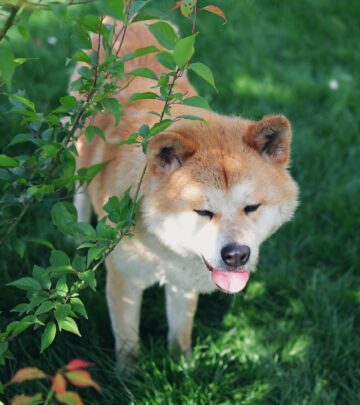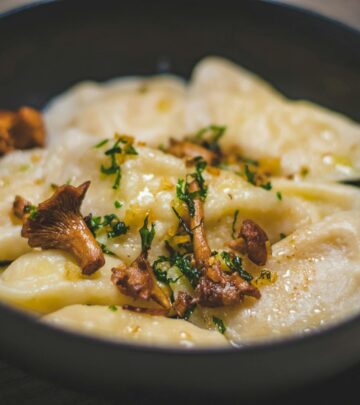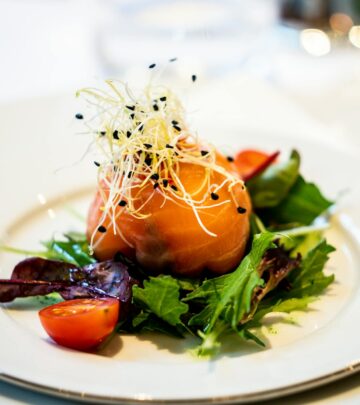Thai Ridgeback Dog Breed: A Complete Guide To Care & Traits
Discover the unique traits and characteristics of the Thai Ridgeback, an ancient breed with remarkable intelligence and loyalty

Thai Ridgeback: An Ancient Breed with Distinctive Features
The Thai Ridgeback stands out as one of the most distinctive and rare dog breeds in the world today. Originating from the eastern provinces of Chanthaburi and Trat in Thailand, this ancient breed is characterized by its most notable feature – the ridge of hair that runs along its back growing in the opposite direction to the rest of its coat. This unique trait is shared with only two other dog breeds worldwide: the Rhodesian Ridgeback and the Phu Quoc Ridgeback.
With a history that stretches back hundreds of years, the Thai Ridgeback developed as a versatile working dog in its native Thailand. Historically, these dogs were prized for their hunting abilities, guardian instincts, and capacity to thrive in the challenging climate of Southeast Asia. Today, while still relatively uncommon outside Thailand, the breed is gaining recognition for its striking appearance, intelligence, and loyalty.
Physical Characteristics and Appearance
The Thai Ridgeback is a medium-sized dog with a muscular, athletic build that speaks to its heritage as a working breed. Males typically stand 22-24 inches at the shoulder, while females measure 20-22 inches. Their weight usually ranges from 35-75 pounds, with males generally being larger and heavier than females.
The breed’s body is slightly longer than it is tall, creating a balanced, proportional appearance. The most distinguishing physical feature is, of course, the ridge on the back – a strip of hair growing in the opposite direction from the rest of the coat. This ridge begins at the withers (shoulder area) and extends down the spine to the hips. Interestingly, there are up to eight recognized ridge patterns, adding another layer of uniqueness to each individual dog.
Thai Ridgebacks have a short, smooth coat that comes in four recognized colors:
- Red
- Black
- Blue (a diluted black that appears as a silvery gray)
- Fawn (ranging from light cream to deeper caramel shades)
The head is wedge-shaped with a strong jaw, almond-shaped eyes that are typically brown, and erect, triangular ears that contribute to their alert expression. Their tail is thick at the base and tapers to a point, usually carried upright or curved like a sickle when the dog is active or alert.
Temperament and Personality
The Thai Ridgeback possesses a complex temperament shaped by centuries of development as a largely self-sufficient breed. These dogs are highly intelligent with strong problem-solving abilities – traits that served them well as hunting companions in their native Thailand. This intelligence, however, is paired with an independent streak that can sometimes be interpreted as stubbornness by inexperienced owners.
Loyalty is perhaps the Thai Ridgeback’s most admirable quality. Once bonded with their family, these dogs show remarkable devotion and protective instincts. They form strong attachments to their human companions but may be naturally reserved or sometimes suspicious around strangers. This makes them excellent watchdogs, as they’re naturally alert and quick to sound the alarm if they sense something amiss.
The Thai Ridgeback’s hunting heritage has left its mark on the modern breed in the form of a strong prey drive. Without proper training and socialization, they may chase smaller animals, including cats and small dogs. This instinct, combined with their natural agility and excellent jumping ability, means secure fencing is essential for homes with Thai Ridgebacks.
Within their family unit, Thai Ridgebacks can be affectionate and playful, though perhaps not as demonstratively as some other breeds. They often form especially close bonds with one or two family members while maintaining respectful relationships with others. Their energy level is typically described as moderate to high, with periods of activity interspersed with time spent lounging and observing their surroundings.
Training and Socialization Needs
Training a Thai Ridgeback requires patience, consistency, and understanding of the breed’s independent nature. These dogs are intelligent and capable of learning quickly, but they may question why they should perform certain tasks or commands if the reason isn’t clear to them. This isn’t stubbornness in the traditional sense – rather, it reflects their history as problem-solving dogs that often worked without close human direction.
Positive reinforcement training methods work best with Thai Ridgebacks. They respond well to rewards, praise, and engaging training sessions that challenge their minds. Harsh training methods or excessive repetition of exercises they’ve already mastered will likely backfire, potentially causing the dog to disengage from the training process altogether.
Early and ongoing socialization is crucial for the Thai Ridgeback. Puppies should be exposed to a wide variety of people, environments, sounds, and situations to help them develop into confident, well-adjusted adults. Without proper socialization, their natural reserve around strangers can potentially develop into fearfulness or inappropriate protective behavior.
Due to their strong prey drive, Thai Ridgebacks should also be carefully introduced to smaller pets and taught appropriate behavior around them. While some individuals may eventually accept cats and other small animals as part of their “pack,” others may never be completely trustworthy around smaller creatures.
Exercise and Mental Stimulation Requirements
The Thai Ridgeback’s energy level can vary somewhat between individuals, but most require a moderate to high amount of physical activity to remain healthy and content. Daily exercise should include at least one long walk or jog, supplemented with play sessions that allow the dog to run and explore safely. Their excellent jumping ability means that secure fencing of adequate height is essential for any yard where they’ll spend time off-leash.
Beyond physical exercise, Thai Ridgebacks need mental stimulation to prevent boredom and the behavioral problems that can result from it. These intelligent dogs enjoy problem-solving activities, training games, scent work, and interactive toys that challenge their minds. A bored Thai Ridgeback may become destructive or develop nuisance behaviors like excessive barking.
Many Thai Ridgebacks enjoy activities that tap into their natural abilities, such as lure coursing or agility training. These structured outlets for energy can help satisfy their need for both physical activity and mental engagement while strengthening the bond between dog and owner.
Health and Lifespan
The Thai Ridgeback is generally a healthy breed with few breed-specific health concerns. Their natural development with minimal human intervention has contributed to their robust health and strong constitution. When properly cared for, Thai Ridgebacks typically enjoy a lifespan of 12-13 years, though many individuals live longer.
Like all purebred dogs, however, they can be prone to certain genetic health issues. The most notable condition associated with ridged dogs is Dermoid Sinus, a congenital defect that creates a tube-like opening in the skin that can extend to varying depths. This condition is present at birth and requires surgical correction.
Other health conditions that have been reported in the breed, though not at high rates, include:
- Hip and elbow dysplasia
- Certain heart conditions
- Eye problems
Responsible breeders screen their breeding stock for these and other conditions to minimize the risk of passing them on to puppies. Potential owners should ask about health testing and request to see documentation of health clearances for both parent dogs.
Grooming and Care
The Thai Ridgeback’s short, smooth coat is relatively low-maintenance in terms of grooming. They shed moderately year-round, with perhaps slightly heavier shedding during seasonal changes. Weekly brushing with a soft-bristled brush or grooming mitt is usually sufficient to remove loose hair and keep the coat looking its best.
Bathing is only needed occasionally – typically every few months unless the dog gets particularly dirty or develops an odor. Like all dogs, Thai Ridgebacks benefit from regular nail trimming, ear cleaning, and dental care. The ridge area should be checked periodically for any signs of irritation or skin problems, though these are uncommon in healthy dogs.
Due to their development in Thailand’s tropical climate, Thai Ridgebacks tend to be sensitive to cold weather. In cooler climates, they may need a doggy jacket for winter walks and shouldn’t be expected to spend extended periods outdoors in cold temperatures.
Is the Thai Ridgeback Right for You?
The Thai Ridgeback can make a wonderful companion for the right owner, but this breed is not suited to every household or lifestyle. Their combination of intelligence, independence, and strong protective instincts means they’re generally best matched with experienced dog owners who understand canine behavior and are committed to consistent training and socialization.
These dogs thrive in homes where they receive plenty of exercise, mental stimulation, and meaningful interaction with their human family members. They may not be the best choice for families with very young children, as their independent nature and potential reserve can sometimes clash with the unpredictable movements and high energy of toddlers.
Potential owners should also consider the breed’s strong prey drive and tendency toward same-sex aggression with other dogs. While proper socialization can help mitigate these traits, they are ingrained aspects of the breed’s character that may never be entirely eliminated.
The Thai Ridgeback remains a relatively rare breed outside of Thailand, which means finding a reputable breeder may require patience and possibly travel. This rarity can also translate to a higher purchase price compared to more common breeds.
Frequently Asked Questions (FAQs)
Q: How rare are Thai Ridgebacks outside of Thailand?
A: Thai Ridgebacks remain quite rare in North America and Europe. They were first imported to the United States in the 1990s and are still considered an uncommon breed, with relatively few registered breeders outside of Thailand.
Q: Are Thai Ridgebacks good with children?
A: Thai Ridgebacks can do well with children when raised with them and properly socialized. However, they may be better suited to homes with older children who understand how to respectfully interact with dogs. Their independent nature and sometimes reserved temperament means they may not tolerate rough handling or excessive noise from very young children.
Q: Do Thai Ridgebacks make good guard dogs?
A: Yes, Thai Ridgebacks have natural protective instincts and are naturally alert and somewhat suspicious of strangers. These traits, combined with their intelligence and loyalty to their family, make them effective watchdogs and deterrents. However, they should not be acquired solely for protection purposes without consideration of their other needs and characteristics.
Q: How much exercise does a Thai Ridgeback need?
A: Thai Ridgebacks typically need moderate to high levels of exercise – at least 45-60 minutes of physical activity daily, plus mental stimulation. Without adequate exercise, they may become bored and develop problematic behaviors.
Q: Are Thai Ridgebacks easy to train?
A: Thai Ridgebacks are intelligent but independent. They can learn quickly but may question why they should perform certain tasks. Training requires patience, consistency, and positive reinforcement methods. They are not typically recommended for first-time dog owners for this reason.
References
Read full bio of medha deb
















Community Experiences
Join the conversation and become a part of our empowering community! Share your stories, experiences, and insights to connect with other beauty, lifestyle, and health enthusiasts.